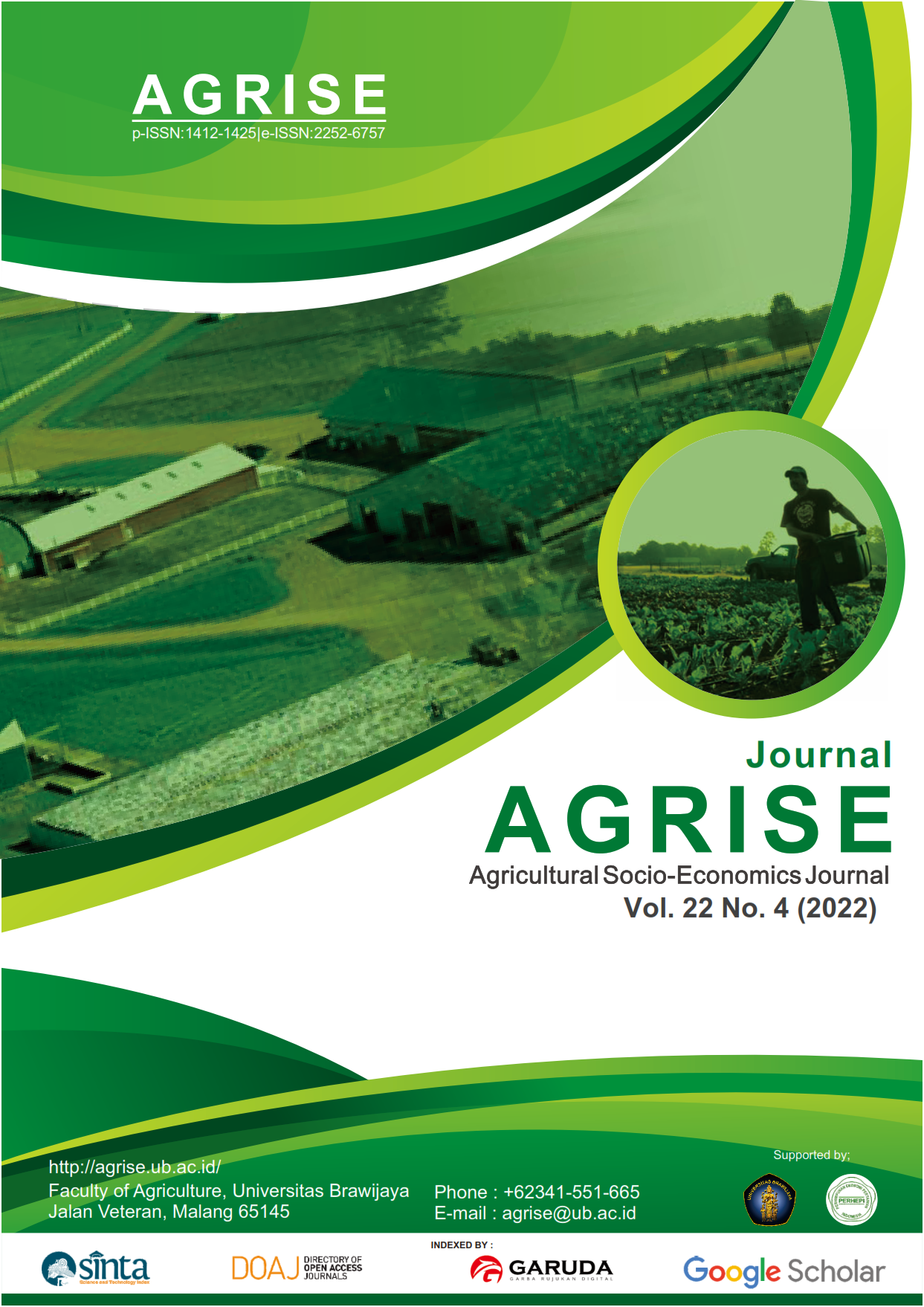DIFFERENCES INDUSTRY PATTERNS BASED ON MILLENNIAL CUSTOMER PATH AT FAST FOOD RESTAURANTS
DOI:
https://doi.org/10.21776/ub.agrise.2022.022.4.11Keywords:
Maketing 4.0, Milenials, Purchase Action Ratio, Brand Advocacy Ratio, Customer PathAbstract
Marketing 4.0 forms a new customer path, which was previously 4A (aware, attitude, act, act again) to 5A (aware, appeal, ask, act, advocate). The main goal of the 4A is for customers to become loyal to a brand. However, in the 5A customer path, loyalty to a brand is not the primary goal but instead advertising or promoting the brand. This study aims to analyze industrial patterns formed based on customer lines at fast food restaurants in Malang City. This research approach uses a quantitative descriptive approach, which is carried out by collecting information about the picture of consumers in the research area. The results of the chi square H1 test were received, namely advocacy carried out by respondents aged 30-39 years not higher than respondents aged 20-29. The fast food restaurant industry pattern formed in the three restaurants in each age group (McDonald's, KFC, and Burger King) has the same shape: door knobs.
References
Almatsier, S. (2009). Prinsip Dasar Ilmu Gizi (8th ed.). PT Gramedia Pustaka Utama.
Anantatmula, V. S., & Shrivastav, B. (2012). Evolution of project teams for Generation Y workforce. International Journal of Managing Projects in Business, 5(1), 9–26. https://doi.org/10.1108/17538371211192874
Hwang, J., & Kim, J. young. (2019). Food tourists’ connectivity through the 5A journey and advocacy: comparison between generations Y and X. Asia Pacific Journal of Tourism Research, 0(0), 1–12. https://doi.org/10.1080/10941665.2019.1580756
Kartajaya, H., & Setiawan, I. (2014). Wow Marketing (Y. Savitry (ed.)). PT Gramedia Pustaka Utama.
Maulina, Erna; Hendryani, C. (2018). 7Ss McKinsey Model to Responding Millennial Customer Buying Behavior at PT Rabbani Hypno Fashion. AdBispreneur: Jurnal Pemikiran Dan Penelitian Administrasi Bisnis Dan Kewirausahaan, 3(3), 219–227.
Philip Kotler, Hermawan Kartajaya, and I. S. (2017). Marketing 4.0. John Wiley & Sons, Inc., Hoboken, New Jersey.
Singarimbun, M., & Effendi, S. (1991). Metode Penelitian Survai (Kedua). LP3ES.
Sumarwan, U. (2003). Dr. lr. Ujang Sumarwan, M.Sc. 368.
Suryani, T. (2013). Perilaku Konsumen di Era Internet: Implikasinya pada Strategi Pemasaran. Perilaku Konsumen Di Era Internet: Implikasinya Pada Strategi Pemasaran, 780.
Tjiptono, F. (2000). Manajemen Jasa. Andi Yogyakarta.
Downloads
Published
How to Cite
Issue
Section
License
Copyright (c) 2022 Archippus Christopher Hendra, Budi Setiawan, Agustina Shinta Hartati Wahyuningtyas

This work is licensed under a Creative Commons Attribution-NonCommercial 4.0 International License.
Authors who publish with this journal agree to the following terms:
- Authors retain copyright and grant the journal right of first publication with the work simultaneously licensed under a Creative Commons Attribution-NonCommercial License that allows others to share the work with an acknowledgment of the work's authorship and initial publication in this journal.
- Authors are able to enter into separate, additional contractual arrangements for the non-exclusive distribution of the journal's published version of the work (e.g., post it to an institutional repository or publish it in a book), with an acknowledgment of its initial publication in this journal.
- Authors are permitted and encouraged to post their work online (e.g., in institutional repositories or on their website) prior to and during the submission process, as it can lead to productive exchanges, as well as earlier and greater citation of published work (See The Effect of Open Access).











